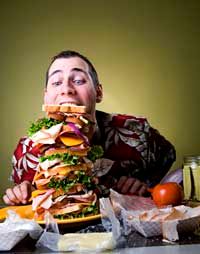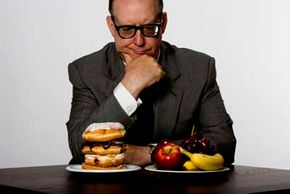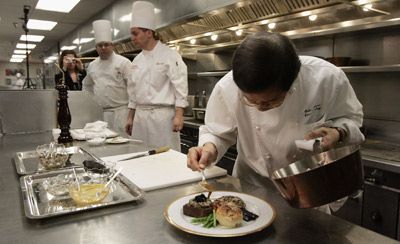You're sitting at your desk at work, mentally absorbed in a beast of a project. Then out of nowhere, something hits your brain like a Mack truck: sushi. You go out for sushi maybe once a month, but all of a sudden you feel as though if you don't get your hands on a pair of chopsticks soon, your body will convulse. You can almost smell the pickled ginger and wasabi wafting from the plate. Your tongue tingles at the memory of the chewy seaweed wrap and the texture of the sticky rice surrounding a cool cucumber filling. Although you were planning a dinner of chicken and veggies, plans have changed. You must have sushi in your belly, stat.
Food cravings don't dictate everything we eat. We are naturally driven to nosh for survival, but cravings go beyond the simple need to quench hunger. In fact, many times, hunger doesn't play a prominent role in where cravings come from since most revolve around the hedonic, or pleasurable, aspects of dining [source: Hill]. Rather, they're a confounding cocktail of body, brain and chemicals that can send us dashing to the grocery store for a tin of anchovies in the middle of the afternoon.
Advertisement
Just about everyone gets food cravings, but gender differences do exist. In general, women are more likely than men to experience food cravings [source: Squires]. Surveys conducted at the Monell Chemical Senses Center found that nearly 100 percent of females and 70 percent of males experienced a food craving in the past year [source: ScienceDaily]. Women in North America and Europe, in particular, salivate for sweets. Men, on the other hand, tend toward the savory side of the menu, digging into barbecue or french fries. For both sexes, the usual foods that lure us in like the Pied Piper of Hamelin are those rich in fat or calories. You'd be hard-pressed to find someone who craves celery sticks without the blue cheese dressing.
Where we live may also dictate what we want. Chocolate, for instance, tops the list of the most widely reported foods craved by American women [source: Yanovski]. On the other hand, Egyptian women go for more flavorful dishes, such as meat-stuffed eggplant [source: McGowan].
Although food cravings are a nearly universal human trait, science has only recently started to unravel their origins. While the meaning of a craving is quite to the point -- "I want a strawberry cupcake with vanilla frosting" -- the interaction of our stomachs, brains and the hormones that elicit these cravings is far more complex. To navigate down this literal candy-land lane, let's kick off where it all begins: in the belly.






